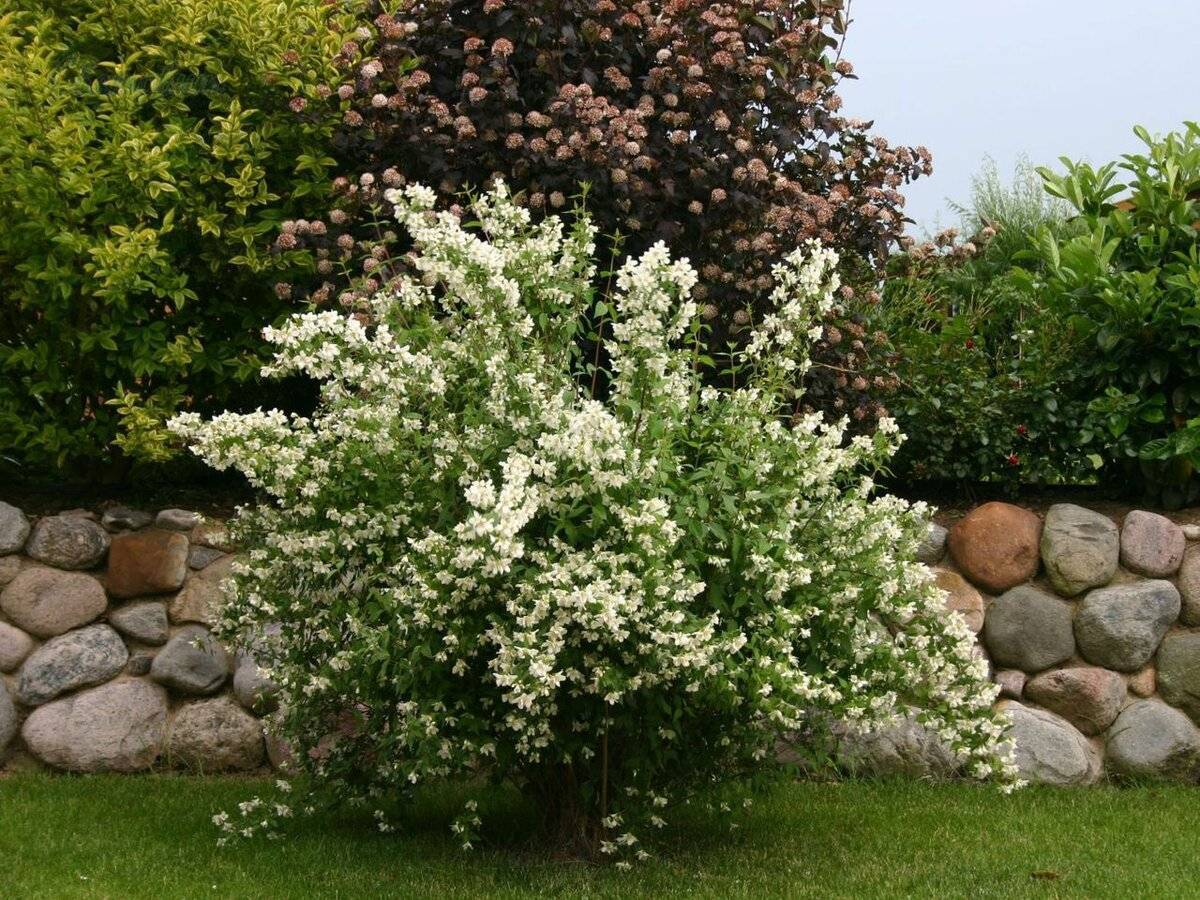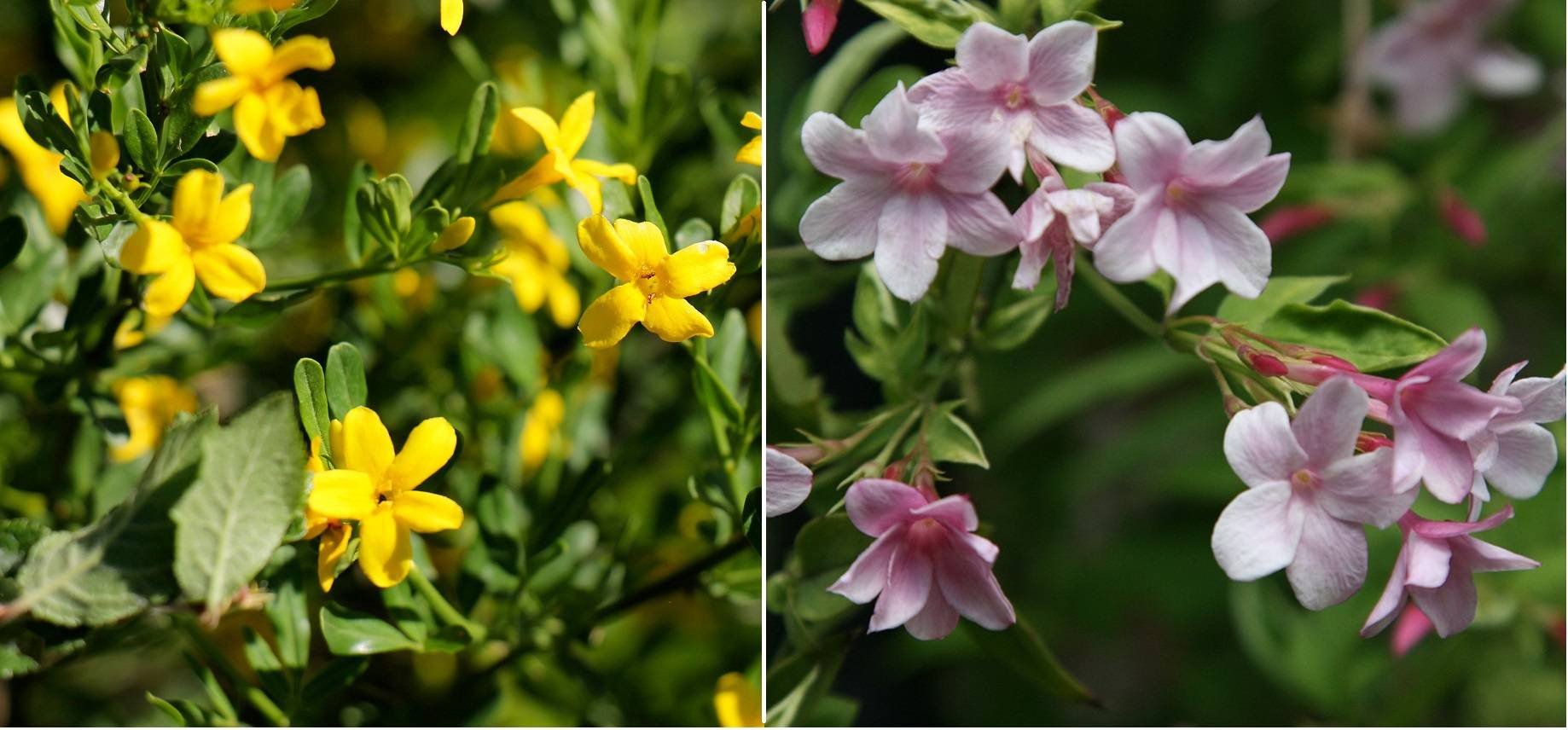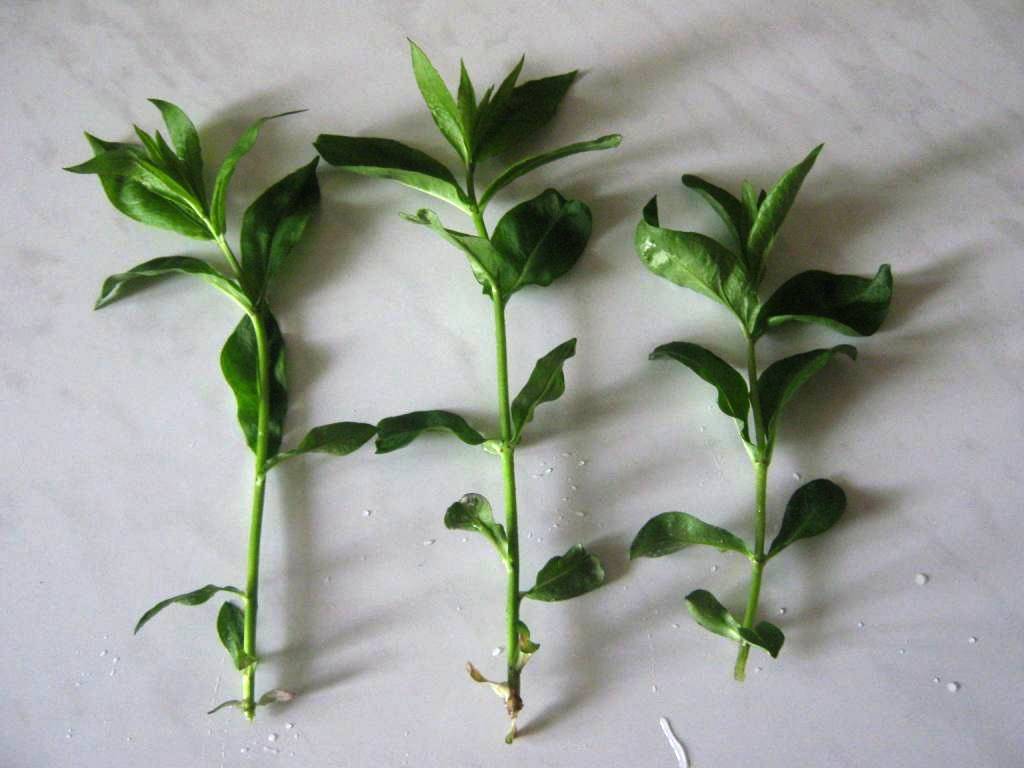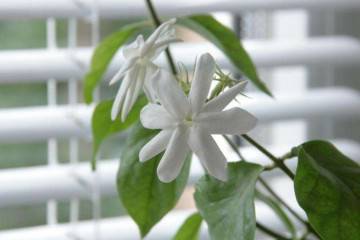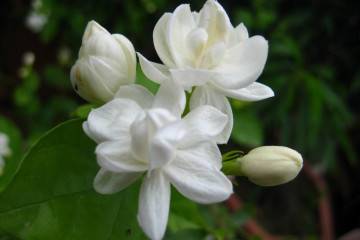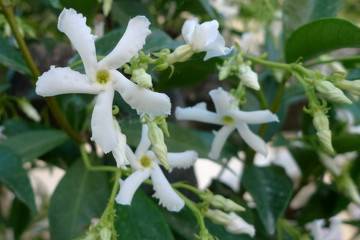Jasmine shrub - what it looks like, species
Content:
The jasmine plant not only has a very beautiful flowering, but also has many beneficial qualities. Of particular note is the aroma that cannot be confused with other scents. This shrub with a subtle delicate scent that fills gardens in the spring is grown by many homeowners.
What a jasmine plant
In order to avoid unnecessary problems when growing jasmine, it is first of all important to learn more information about the plant. Information about the natural habitat suggests how best to plant and care for shrubs.
Short description
Jasmine is a shrub that came to us from the Mediterranean region with its tropical and subtropical climate. Also in the wild, the plant can be found in Australia, Africa, Asia and South America. According to the description, it is an evergreen shrub of the Olive family with medicinal properties. The benefits of jasmine tea have been known for a long time, and the plant is very popular in Chinese traditional medicine.
The height of a bush of various varieties can vary from 0.1 to 4 meters. Some home-grown varieties look more like vines and can curl with support.
Popular garden varieties
The shrub has hundreds of varieties, differing in size, as well as in the shape and color of the buds, which can be white, yellow or pink. It easily adapts to different weather conditions. Some varieties are suitable for indoor growing, while others are popular with gardeners and summer residents.
Small-leaved jasmine
A compact bush, no more than 1 meter high. It has, as the name suggests, small curved sheet plates. The flowers of this jasmine shrub are lush, double. The aroma has characteristic strawberry notes.
Common jasmine corona
Quite a large variety of plants, can reach a height of 3 meters. During the flowering period, the bush is covered with lush inflorescences of white or cream color, exuding a pleasant sweet smell. The leaves are distinguished by a pronounced golden color.
Jasmine fluffy
A park variety of shrubs capable of growing up to 4 meters in height. This jasmine variety looks more like a tree. Blooms later, lasting about 4 weeks. The flowers are creamy, the aroma is subtle, barely perceptible.
Planting garden jasmine in the open field
To grow a healthy and robust plant, you should know the standard agricultural practices. Knowing how to plant jasmine can help it fully reveal its varietal characteristics.
Location selection
Jasmine is a plant that is not too demanding on the place where it will grow. Both sunny and shady corners of the garden suit him. It is mandatory for the selected site to comply with a number of conditions:
- protection from drafts;
- location on a small hill;
- sufficient illumination.
The shrub goes well with purple or blue flowers. Compositions with delphinium and lavender look great. The neighborhood with Japanese spirea and hydrangea will also be attractive.
How to prepare the soil for planting
Despite the unpretentiousness of the plant, the soil for planting must be properly prepared. If there is no elevated place on the site where you can plant shrubs, then you should manually create an earthen embankment. This will avoid stagnant moisture at the jasmine rhizome.
At the landing site, it is necessary to dig a hole in advance with a depth of 60-80 cm and a diameter of 50 cm, and then add light fillers to it. For these purposes, stones and sand are perfect.
How to care for a shrub
Like any flowering plant, the jasmine shrub requires proper planting, care and maintenance. Only in this case the bush will bloom profusely and delight the gardener with its aroma.
Watering rules and humidity
Jasmine, the bush of which is planted in the garden, does not require special watering except for natural moisture with rainwater. An exception may be dry summers, when dry and cracking of the earth occurs. Otherwise, the plant tolerates drought well, which is preferable for it to excessive moisture, when root nutrition can be disturbed.
Top dressing and soil quality
The first time fertilizers are applied one year after planting the plant in the ground. Further, the shrub needs regular fertilizing with minerals. Experienced gardeners recommend mixing the nutrient solution, adding about 5 g of superphosphate for each liter of water, as well as 2.5 g of urea and potassium sulfide.
From organic matter for feeding jasmine, humus and manure are suitable. The latter, in order to avoid burns, should be diluted with water in a ratio of 1:15.
Pruning and replanting
Although many summer residents do not form the crown of the shrub, it looks much better with regular pruning.
When performing the procedure, you should adhere to some rules:
- Formative pruning is carried out in the spring, removing frozen and dried shoots.
- The longest branches are removed completely, and those that are shorter are cut in half.
- For lush flowering, they resort to rejuvenating the bush, cutting off branches without flower buds.
The transplant is recommended in the spring. A planting hole is dug in a new place, corresponding to the size of the root system.
Winter garden jasmine care
Adult shrubs tolerate low temperatures much more easily than young plants, so they do not need special preparation for winter. It is advisable to wrap young specimens with non-woven material or cover the lower part with a straw pillow or dry grass. It is also recommended to dig up the soil in the trunk circle in the fall, adding compost to it.
Features of flowering plants
Jasmine, the flower of which is beautiful and fragrant, is quite often used in landscape design. Any variety looks great in the form of hedges, as well as as a background for compositions.
A period of activity and rest
Jasmine blooms for the first time when 2-4 years have passed since planting. Subject to correct agricultural technology, the plant is covered with buds 2-3 weeks earlier. The flowering period is long - from early spring to autumn, although this largely depends on the variety and climatic conditions.
For the winter, the shrub sheds its leaves and rests until the next season. There are varieties that bloom during the winter or even all year round. These include winter jasmine, polyanthus (multi-flowered) or sabak.
Types and shape of flowers
Inexperienced gardeners often mistake a chubushnik for this plant, not knowing what jasmine looks like. The only thing that gives these two shrubs similarity is the scent, but otherwise they are very different. Seeing how the jasmine blooms, it can no longer be confused with anything.
Real jasmine comes in several colors: white, yellow and pink with different shades. The flowers of the shrub jasmine are in the shape of stars or bells, they can be ordinary or double, and have different sizes. They form inflorescences, collected in brushes or umbrellas.
Flower reproduction methods
There are several ways to plant jasmine. Each of the methods involves the implementation of a specific procedure:
- The plant is planted with seeds in open ground or seedlings are pre-germinated in boxes.
- Cuttings are carried out in early June, rooting the cuttings in open soil or in a greenhouse.
- Root division is best done in autumn.
- The cuttings are rooted in the fall and after they overwinter, they are transplanted to a permanent place.
The plant takes root well with any method of propagation, but when dividing a bush or rooting layers, jasmine picks up color earlier than when planting cuttings.
Growing problems, diseases and pests
Of the garden pests for jasmine, the most dangerous are weevils, aphids, spider mites, scale insects and whiteflies. If these insects are found on a shrub, it should be treated with an appropriate insecticidal agent. If the initial degree of infestation is observed, then you can spray the plant with soapy water.
Diseases that most often affect jasmine are white rot and septoria spot. In the first case, white spots form on the underside of the leaves, and the flowers wither and dry out. For prophylaxis, the bushes should be regularly treated with Agrolekar or Keeper.
Septoria spot is a fungal disease in which brown spots up to 10 mm in size appear on the leaves. Over time, the central part of the stain dries up, crumbles and crumbles. Sick leaves dry and fly around. Bordeaux liquid can help in the fight against the disease.
Jasmine bushes look great anywhere. Having familiarized yourself with the intricacies of growing a shrub, you can safely take on planting it. With proper care, this abundantly flowering plant will delight home owners with its aroma for many years.


